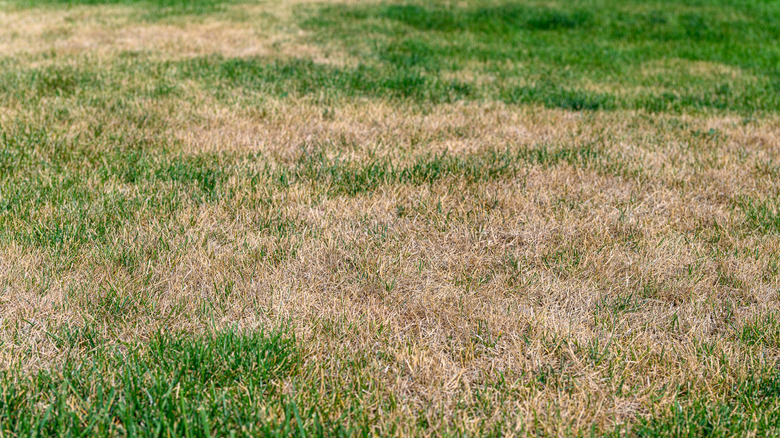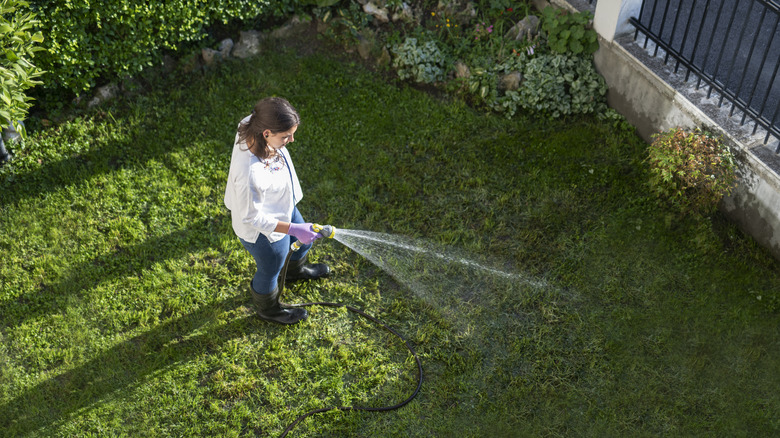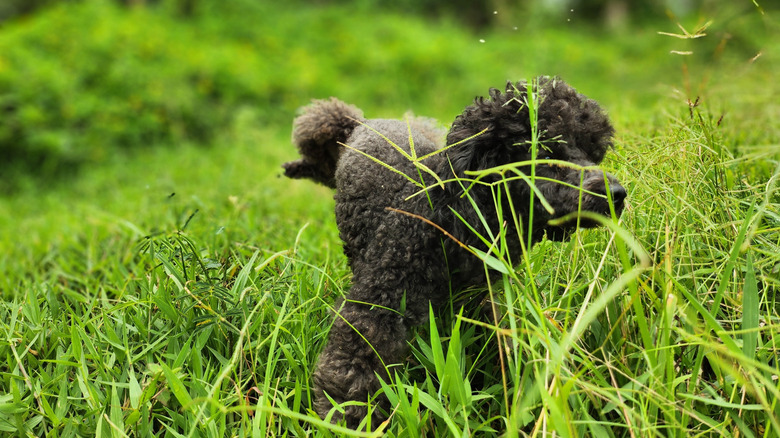Why Your Grass Is Turning Yellow And The Best Ways To Solve The Problem
A lush, green lawn is often a point of pride for homeowners, but when patches of grass start turning yellow, it can be frustrating and concerning. Yellowing grass is more than just a cosmetic issue — at times, it's a sign of an underlying problem that, if left unchecked, could lead to more widespread damage. Whether the discoloration is spreading across your entire lawn or appearing in isolated patches, the key to restoring your grass's health lies in identifying the root cause.
A yellow lawn isn't always a bad thing. Often, it's a sign that the grass has gone dormant — a perfectly natural occurrence. Cool-season grasses, like fescues and perennial ryegrass, often become dormant during the hottest months of the year, when heat is intense, and moisture is scarce. Conversely, warm-season varieties like Bermudagrass naturally turn yellow because of dormancy when cold weather arrives.
However, if dormancy isn't an issue, the reasons for the change in color can vary. Watering issues, nutrient deficiencies and environmental stressors all play a role in creating patches of yellow grass. Pests, lawn disease and chemical spills can also be at play, silently damaging the roots. The good news is that yellowing grass can usually be revived with the right care and attention. By pinpointing the exact issue, you can figure out the fastest fix for a yellow lawn and take targeted steps to prevent future discoloration.
Common causes of yellow grass
One of the most frequent reasons grass turns yellow is improper watering. Both overwatering and underwatering can have damaging effects. If grass isn't receiving enough moisture, it begins to dry out and lose its rich green color. On the other hand, too much water can suffocate the roots, causing them to rot and weaken. Excess moisture also encourages fungal growth, which further contributes to discoloration. Achieving the right balance in your watering routine is essential for maintaining healthy grass.
Another major cause of yellowing grass is nutrient deficiency, particularly the lack of nitrogen. Nitrogen is responsible for promoting strong, green growth, and when soil is depleted of this essential nutrient, grass can begin to turn pale or yellow. Other deficiencies, such as iron or magnesium, can also impact the lawn's appearance. Soil quality plays a critical role in nutrient absorption. If the soil is compacted or lacks organic matter, roots may struggle to take in the necessary nutrients and oxygen, leading to weakened, discolored grass.
Your dog could be to blame for your grass turning yellow. Dog urine contains high nitrogen levels that burn grass, creating unsightly spots. Similarly, excessive use of fertilizers or pesticides can overwhelm the lawn, leading to chemical burns. Pests that eat grass roots, such as grubs, and fungal infections like lawn rust or dollar spot, may also cause yellowing, requiring specialized treatments.
Best ways to fix and prevent yellow grass
Fixing yellow grass starts with proper watering. Lawns need about an inch of water per week, including rainfall. Watering deeply but infrequently encourages strong roots. If your grass is underwatered, increase hydration gradually to avoid shocking the roots.
If a nutrient deficiency is the issue, applying a slow-release nitrogen fertilizer can restore color and strength, but make sure to follow the recommended application rates so you don't overdo it. Soil testing can help determine if additional nutrients like iron or magnesium are needed. For compacted soil, aeration improves oxygen flow and allows roots to absorb nutrients more effectively.
For pet urine spots, immediately watering the area can dilute nitrogen concentration and minimize damage. Training pets to use a designated spot can also help. If chemicals are the problem, opt for organic fertilizers and don't apply them when grass is wet, as it will cause the fertilizer to get stuck to the blades. Pests and fungi require more specific treatments, such as nematodes for grubs or fungicides for lawn diseases.


